Dream Weavers
Märta Måås-Fjetterström creates some of the finest rugs and tapestries in the world, handwoven at the studio in Båstad, Sweden.
Dream Weavers
Märta Måås-Fjetterström creates some of the finest rugs and tapestries in the world, handwoven at the studio in Båstad, Sweden.
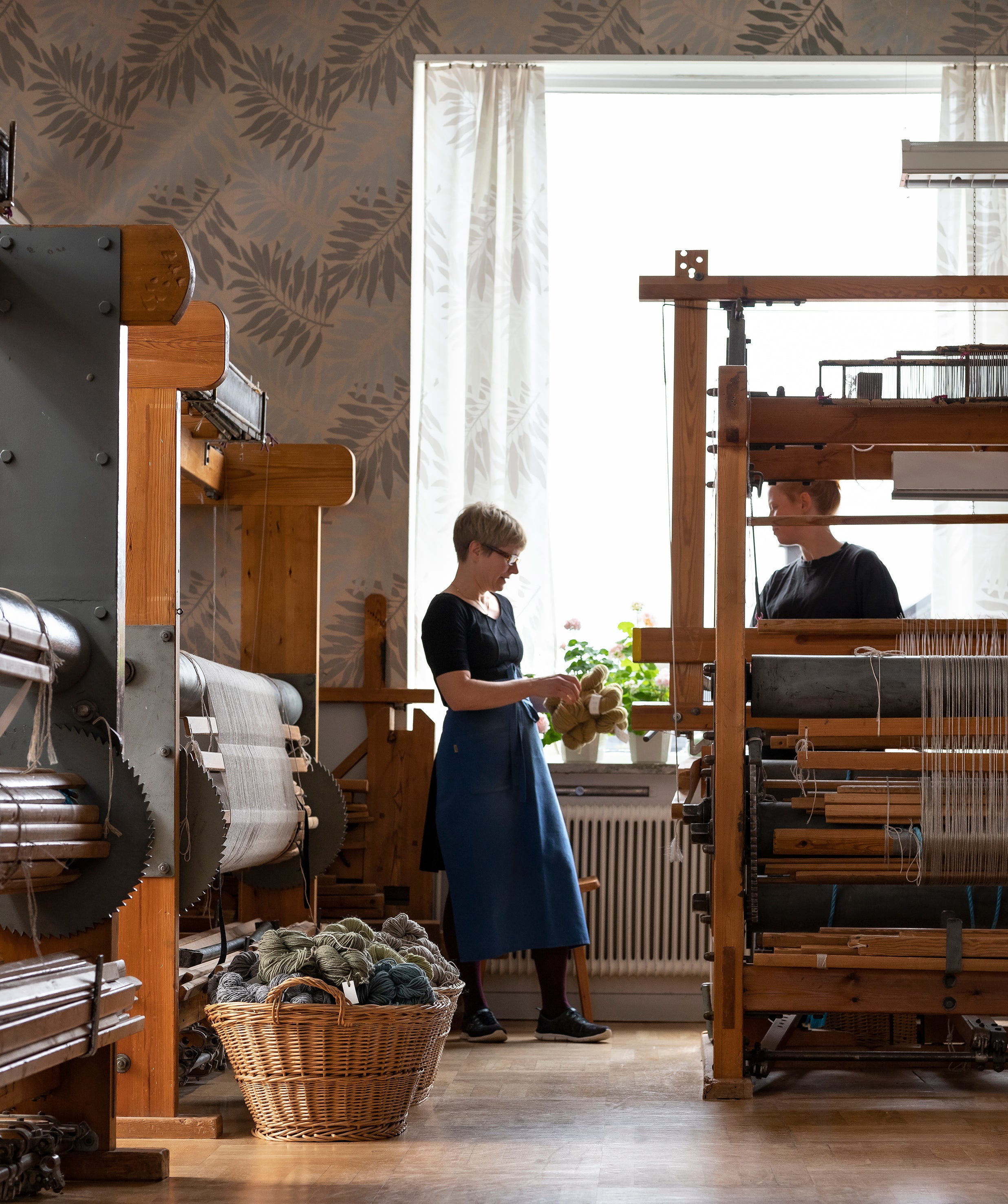
Graduates from Sweden’s top weaving schools and trained in the tradition of the Märta Måås Fjetterström studio, the artisan weavers are unique bearers of a century-long chain of knowledge.
Without art weavers no Märta Måås rugs – without artists no Märta Måås rugs. The working method Märta Måås-Fjetterström developed to realise her ingenious idea of manufacturing rugs of the highest craft quality combined with an artistic content is unique. In the old days, weavers were trained in the studio. One started as a young yarn girl, advanced to the apprentice room where one spent several years learning from an experienced art weaver before one was given the responsibility to operate a loom. Today we employ highly qualified art weavers who are trained in hand weaving, preferably combined with an art education. Sweden has a long tradition of hand weaving and there are schools that offer comprehensive weaving programmes. As an art weaver at MMF the learning process continues every day. Colleagues with many years of experience are happy to share their expertise, which they have inherited from previous generations of MMF weavers – an unbroken chain stretching back almost 100 years!
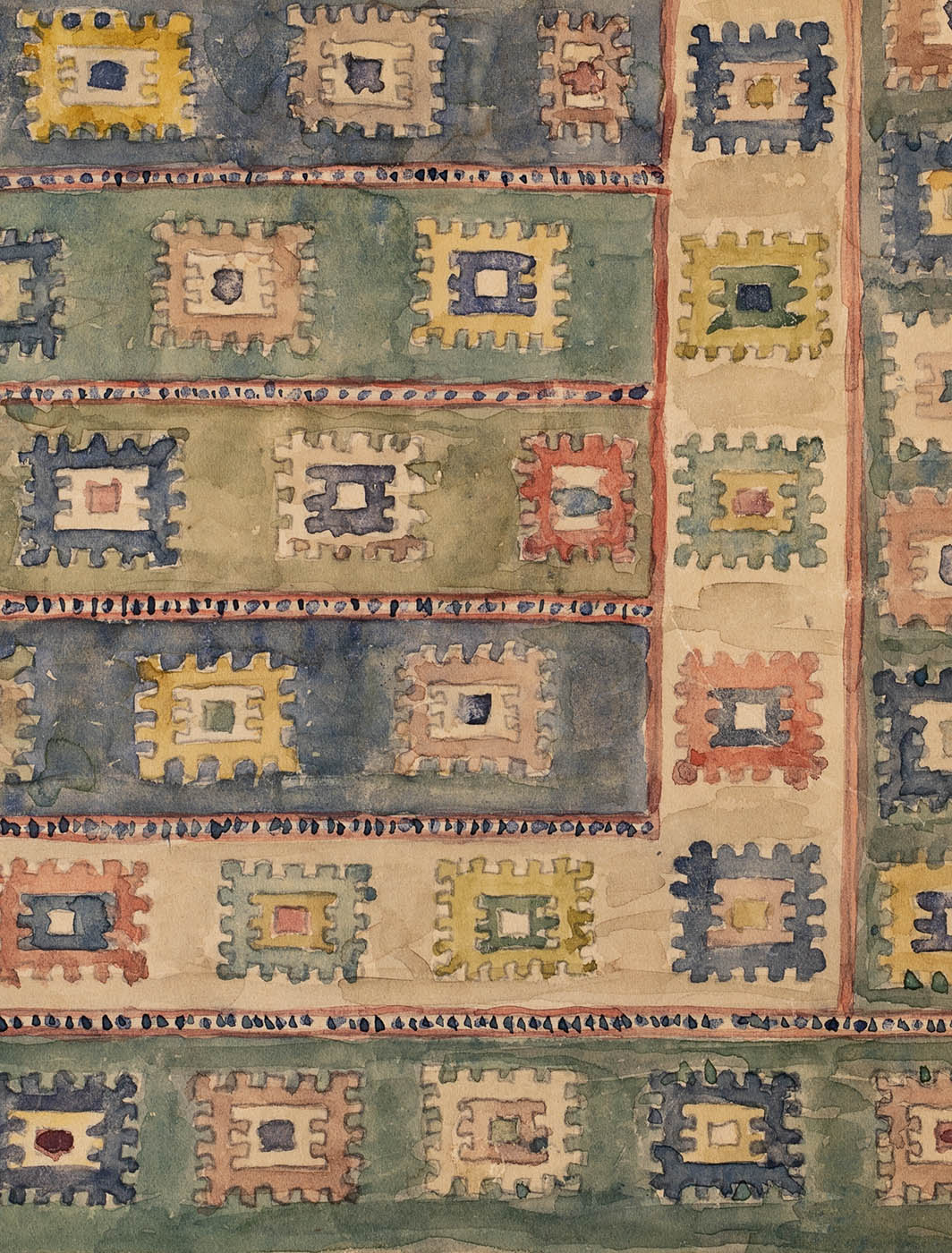
A studio piece always begins with an artist’s sketch. Our collection includes over one thousand sketches for rugs and tapestries, whereof almost 700 are created by Märta Måås-Fjetterström herself.
The basis of every rug or fabric is a sketch created by an artist. A full-scale sketch for a textile work is called a cartoon. Märta Måås-Fjetterström’s idea of creating Swedish rugs with an artistic value is still the foundation of the MMF brand.
Märta Måås-Fjetterström left a large number of exquisite watercolour sketches for some 700 compositions for rugs and fabrics in various textile techniques. These sketches are still used and form the basis for the working drawings that the weavers employ in their looms.
Barbro Nilsson often created full-scale sketches in watercolour, crayon or coloured pencil for her large fabrics and gobeläng flat weave rugs. Many of her rug compositions are built on a system, which, when the rugs are put together, creates new patterns in addition to those visible in a smaller rug of the same composition. Barbro Nilsson was a master of colours and many of her rug compositions are available in a large variety of colours.
Marianne Richter’s sketches are playful and of vary greatly in form and colour. Executed in watercolour and pencil on delicate tissue paper, the sketches were patched on cardboard and often accompanied by Richter’s notes to the studio and the weavers. These notes, which are contemporary with the sketches, are extremely helpful when the rugs are woven today, perhaps 60–70 years later. Each rug composition has been painted in various dimensions with individual technical solutions for borders and other details.
In excess of 1,000 sketches for rugs and fabrics created by artists in the last 100 years are housed in MMF AB’s pattern archive and constitute an invaluable resource. The archive is augmented by contemporary artists’ sketches, which are sometimes only used once to weave a unique art rug.
Our classic rugs by artists such as Märta Måås-Fjetterström, Barbro Nilsson and Marianne Richter are woven on commission in accordance with the guiding principle that Märta Måås-Fjetterström had when she founded her studio in 1919 and which the company continues to build on.
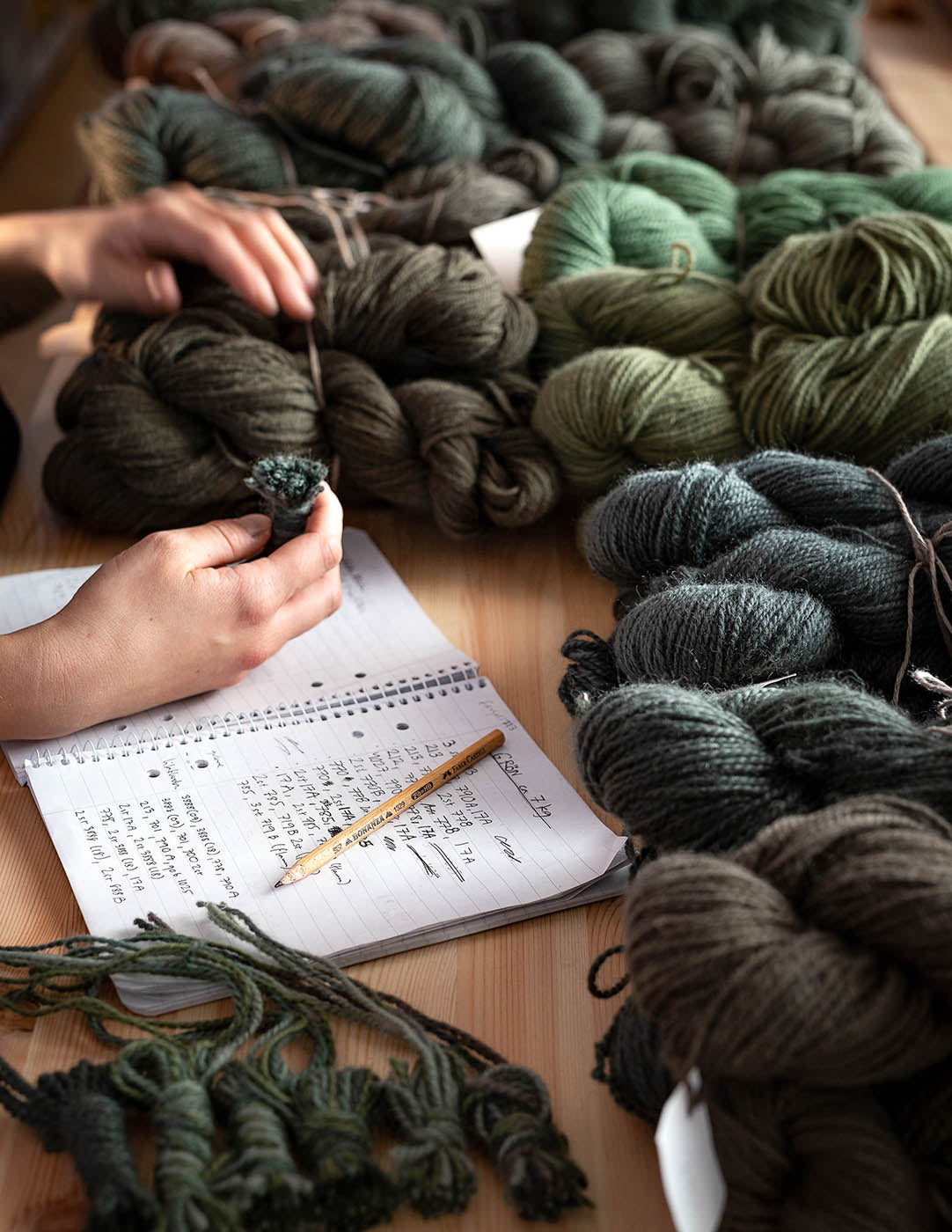
Every design created at the studio over the past century has its own original yarn sample. These highly guarded treasures detail the correct yarn qualities and colors originally selected by the artists and are essential in the artisan’s work with the designs.
For each rug or fabric there are yarn samples that have been approved by the artist. They have often been test-woven several times before the final sample was approved. When not used, they are stored in dark, fire-proof cabinets. Not much has been written about yarn samples but they have a lot to tell an experienced art weaver. It is a wordless, professional language developed in the studio for close on 100 years, which makes it possible to weave a rug that has not been woven in, say, 70 years – provided that there are MMF weavers who have learned to interpret the yarn samples and know how the artists want the yarns to be used.
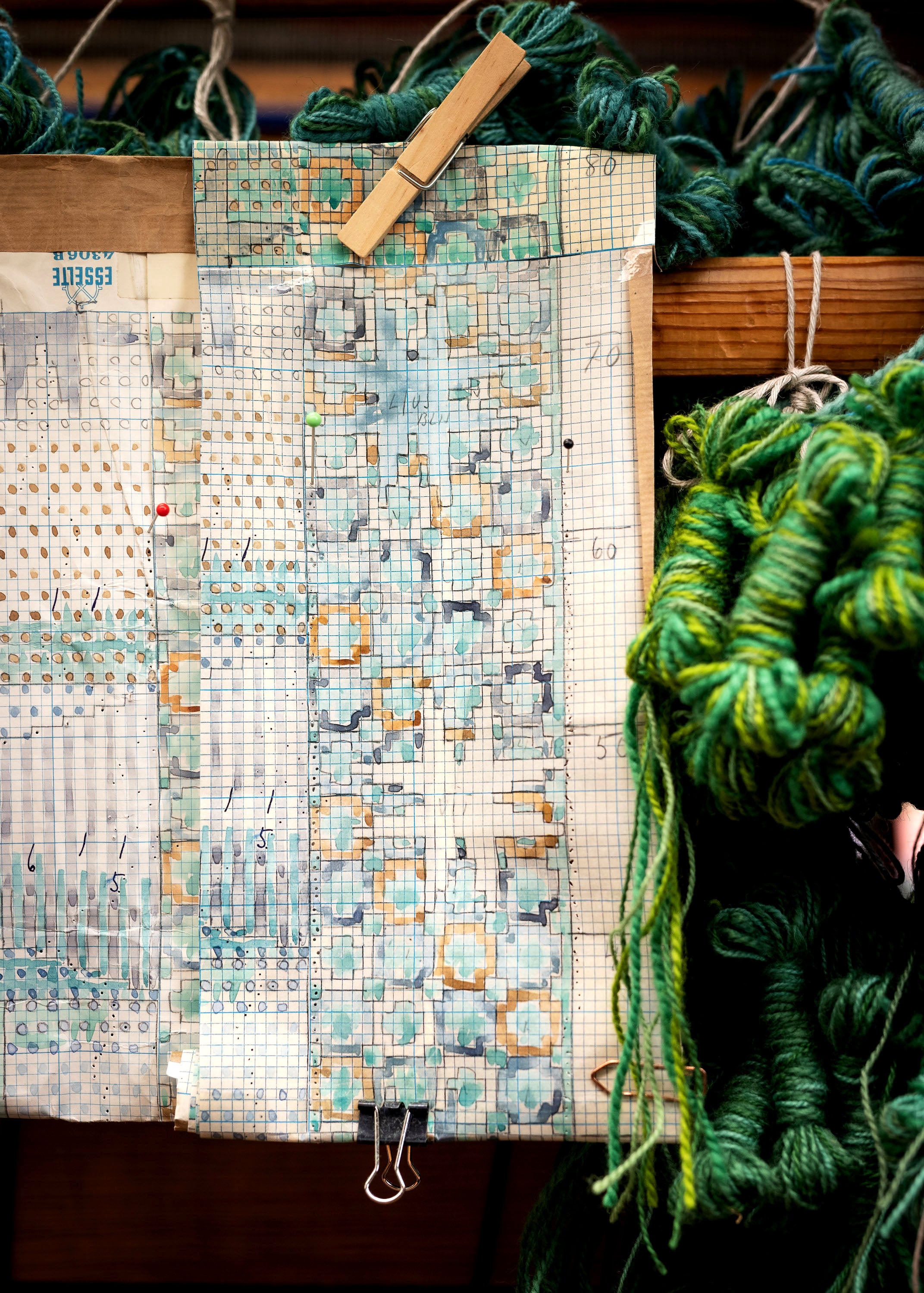
The hand painted work drawings contain many of the secrets that in the hands of the artisan weavers can be interpreted into a piece that fulfills the artist’s original intentions with the design.
Painted in watercolour on squared paper, the working drawings for rugs in knotted pile, knotted rya and rölakan flat weave stipulate the density of the warp and weft for each particular rug. The drawings hang in the loom in front of the weaver. Pins are stuck in the paper and moved to indicate where in the pattern the weaver should look.
Gobeläng rugs and fabrics require painted contour drawings that are fastened under the warp in the loom. Where the colours should be positioned is interpreted by the weaver from watercolour sketches and weaving samples. The studio is home to a considerable number of patterns that can be realised in a great variety of dimensions. In total there are tens of thousands of working drawings, which are produced and used when a client commissions a rug to be woven.

We only use the best, natural materials. The warp is either linen or wool. The weft is carefully selected sheep’s wool, spun to the right quality and strength needed to withstand use over several generations. The dying of the wool is done by the weavers according to the original recipes.
The warp is most often of linen but wool is also sometimes used. The warp yarn is specially twisted linen of the highest quality of various gauges depending on the weaving technique and the density of the rug to be woven.
The weft yarn is almost exclusively of wool.
Wool yarn for a rug should be strong and shiny, and at the same time soft and malleable. This places great demands on our yarn suppliers, to deliver the best wool from the most suitable breeds of sheep. Sheep breeds that have grazed in a cold climate for thousands of years have developed a type of wool with the correct characteristics – finely curled bottom wool followed by a long, shiny curl. Perfect and so beautiful in a rug!
The weavers dye the yarn in the studio based on the yarn samples selected and approved by the artists in collaboration with the weavers. The yarn is dyed by acid dyeing with synthetic colour pigment in order to produce as colourfast a yarn as possible. Märta Måås-Fjetterström developed her tonality at the dyeing laboratory of the Klippan Wool Factory in the 1920s: dusky, deep colours, very close to those of nature. Barbro Nilsson was an accomplished dyer and had taught yarn dyeing as a young woman. Her tones are clearer, calm and at the same time lively. Playful Marianne Richter’s colours sparkle like jewels in cerise, orange, ruby, emerald and sapphire. When we collaborate with contemporary artists we may add new colours to our large yarn storage, which is carried out in the dyeing laboratory by our expert art weavers.
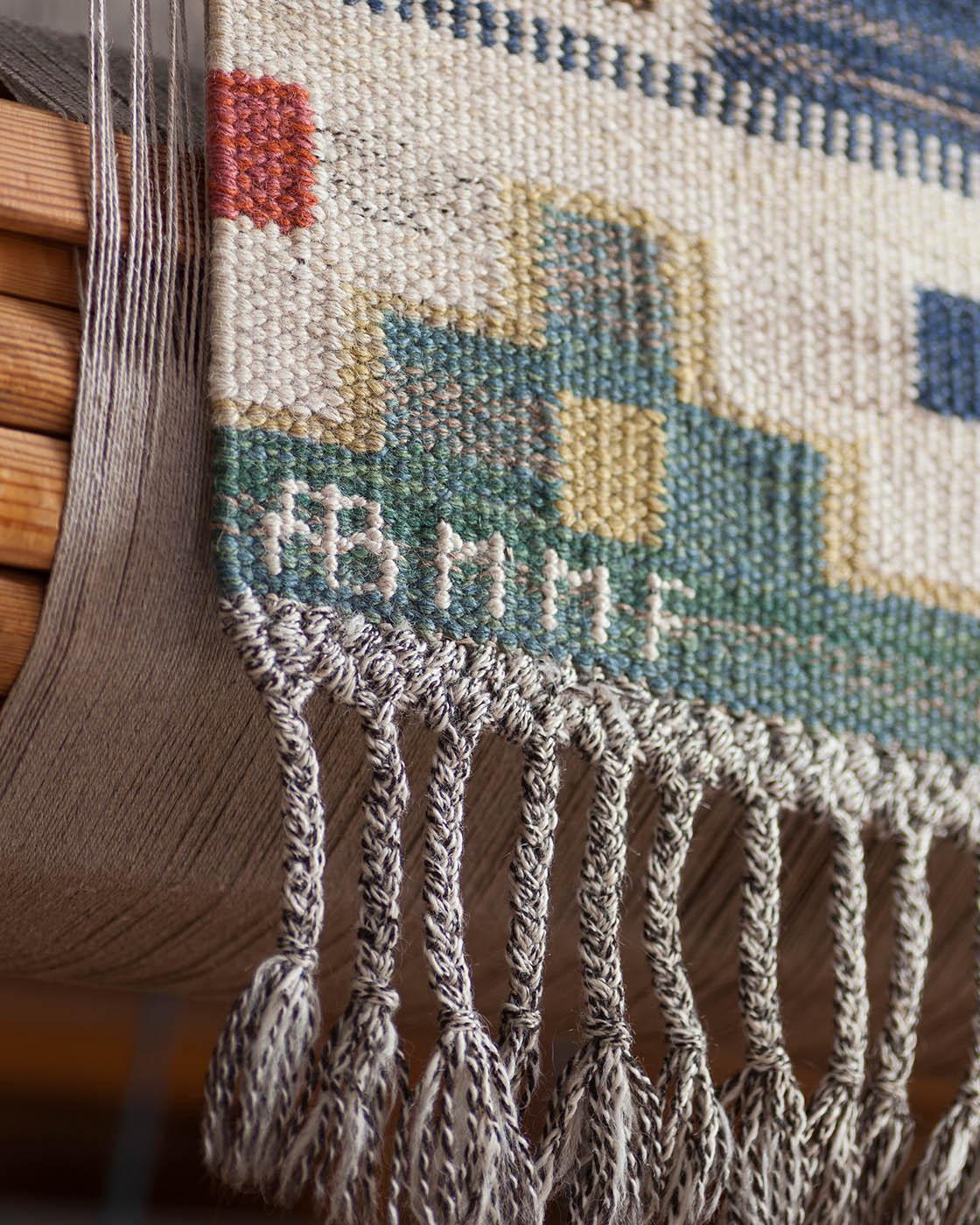
One of the simplest ways to identify a piece from the Märta Måås-Fjetterström studio is to look for the signatures. They can always tell you something about the piece.
From the very beginning, pieces from the Märta Måås-Fjetterström studio have been signed with the studio name – MMF. This was woven into the bottom left corner of the rug. Märta Måås-Fjetterström designed the overwhelming majority of the pieces herself – but in the rare instance of a collaboration, the other artist's signature would be woven into the bottom right hand corner of the rug.
This tradition continued after Märta Måås-Fjetterström's passing in 1941. The studio name AB MMF is woven into the bottom left corner, with the AB indicating the piece was created after 1941. If MMF is not the designer there is also a second signature in the bottom right corner. The weavers signatures are also added as color coded dots in the top right corner. The number of dots correspond to the number of weavers sitting beside each other, and every weavers unique colors is saved in the Märta Måås-Fjetterström archives.
Every piece woven over the past century is recorded in the studio's production logs with a unique identifying number.
Examples of contributing artist
Use this text to share information about your collection with your customers.